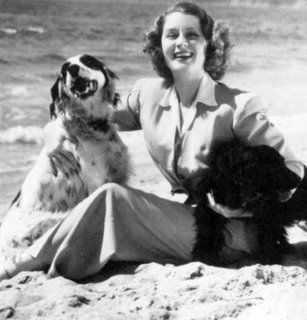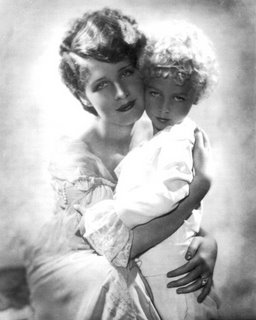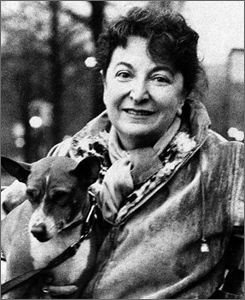
In more recent times, much has been made of Irving Thalberg’s personal attention and guidance of Norma’s career at the discounting of Shearer’s own formidable prowess as an actress. The craw initiated by rival actress of her vintage, Joan Crawford “How can I compete with her…she sleeps with the boss” has effectively managed to eclipse the fact that whatever special treatment Shearer received under Thalberg’s tenure was completely deserved.
By the late 1970s and early 80s ‘star-bashing’ had become a blood sport bordering on a national past time. There seemed to be ‘nothing sacred’ left in Hollywood that the wicked pen of a ravenous biographer – in some cases working backward from nothing more than cheap rumor and innuendo – could not destroy in his/her cleverly barbed prose. From flagrant lies about Cary Grant’s homosexuality, to Christina Crawford’s Mommie Dearest, the spitefulness that sold copy during this period very
 much echoed the old adage put forth several decades earlier by pop culture mandarin, Walter Winchell; “the quickest way to become famous is to throw a brick at somebody famous.”
much echoed the old adage put forth several decades earlier by pop culture mandarin, Walter Winchell; “the quickest way to become famous is to throw a brick at somebody famous.”This age of complete deconstruction of ‘stars’ as rarified shimmering spirits had come about for a three fold reason; first – because the studio system, that had once coddled its assets, carefully sanctioning all press releases and fabricating near perfect private lives, had become a thing of the past. Hence, that barrier of protection between stars and the outside world was forever lost.
Second – the old guard of glamour and good taste had subsided, leaving in its wake a motley crew of rough and tumble characters seemingly disinterested in their own P.R. If the press and public
 discovered cracks in their façade in this age of the anti-hero on screen, then this sort of fallibility in life made the new breed more palpably charming and real to the paying customer.
discovered cracks in their façade in this age of the anti-hero on screen, then this sort of fallibility in life made the new breed more palpably charming and real to the paying customer.Third – whether on the home front or from rivals in the industry itself – professional jealousy had become a saleable commodity in post-golden Hollywood. Any second tier player, extra, director, disgruntled child, ex wife/husband or former mistress/lover, willing to reveal their experiences while mingling with the legends, was easily guaranteed a lucrative book deal to spill the sordid details in print.
What is most disheartened then about the critical attack that
 mounted on the legacy of Norma Shearer was that it had none of these trappings to draw from. Norma had been beloved by most all who knew her. If she had been a born flirt in her time, she had also been deeply committed to Thalberg, and later, second husband, Martin Arrouge – the latter a staunch champion of his wife’s privacy, who absolutely refused to entertain any comments regarding his wife in print.
mounted on the legacy of Norma Shearer was that it had none of these trappings to draw from. Norma had been beloved by most all who knew her. If she had been a born flirt in her time, she had also been deeply committed to Thalberg, and later, second husband, Martin Arrouge – the latter a staunch champion of his wife’s privacy, who absolutely refused to entertain any comments regarding his wife in print.Generous with both her time and money, Shearer had brought many burgeoning talents into the light, including actress Janet Leigh and director Robert Evans. Hence, ‘the bricks’ being lobbed at Shearer’s credibility during the late 70s and 80s were directed at the only remaining portion of her legacy not Teflon-coated by her sterling reputation – her films.
As she grew older, Norma lived to see many of these so called
 ‘critics’ malign her reputation as an actress in print. The critiques and retrospectives of Norma’s work written in the late seventies in particular are bitter barbs and unjustified epitaphs to her body of work – mean spirited and brutally cynical.
‘critics’ malign her reputation as an actress in print. The critiques and retrospectives of Norma’s work written in the late seventies in particular are bitter barbs and unjustified epitaphs to her body of work – mean spirited and brutally cynical.Critic Pauline Kael was one of the first to take an axe to Norma’s body of work, claiming that “…she was never much of an actress…” and “…never rose above conventional adequacy.”
A more fitting, and accurate critique from this period derived from a program release printed up during a commemorative retrospective of Norma’s filmic work at George Eastman House in Rochester New York.
“The more that one tries to isolate the qualities that made Norma Shearer unique, the more one heads into an area of a kind gracious dignity – a serene quality of bearing and attitude that eludes sensible definition.

For certainly she played a good share of audacious, sometimes even wicked and often déclassé women – but never without that special Shearer aura along with most of the other positive attributes that have vanished wholly from a morally dismal world. The ghost flowers are gone: the bluebirds are rare, and the likes of Norma Shearer are nowhere to be seen in contemporary films.”
In poor health during the last decade of her life – Norma often became disoriented and frequently confused whatever male figure was standing before her to be that of her late first husband, Irving Thalberg. Legends, you see, do pass their prime. But that never alters the legend for the rest of us.
At the height of her career, Norma Shearer was a uniquely talented individual who defied conventional wisdom - and the
 odds - to become one of the most celebrated actresses Hollywood has ever known. At her zenith she commanded a $6000 per week salary. She was the toast of most everyone who knew her and a great confident to any aspiring young talent willing to embrace the tutelage and courage that her years of wisdom so readily provided. On June 12th 1983, Norma Shearer succumbed to pneumonia at the Actor’s Home in Woodland Hills, CA.
odds - to become one of the most celebrated actresses Hollywood has ever known. At her zenith she commanded a $6000 per week salary. She was the toast of most everyone who knew her and a great confident to any aspiring young talent willing to embrace the tutelage and courage that her years of wisdom so readily provided. On June 12th 1983, Norma Shearer succumbed to pneumonia at the Actor’s Home in Woodland Hills, CA.Yet, time continues to be on her side. As an actress, Norma Shearer exudes a profound serenity and respectability. That undercurrent of exquisite fortitude, poise and spirited conviction are attributes wholly absent from our current insincere ensemble of leading ladies. What Norma Shearer most vivaciously embodies is an odd contradiction between something unattainable, yet decidedly accessible – she is a glimpse into human perfection: ever more the star than the legend, further the woman than the star and quite definitely fundamental to us now, even as the ghost flowers of her caste have departed into their grand paradise of forgotten bluebirds in the sky.
No comments:
Post a Comment